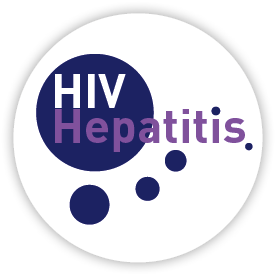Dolutegravir placental transfer moderate in ex vivo model
1 October 2015. Related: Conference reports, Antiretrovirals, Pregnancy, PK and drug interactions, PK Workshop 16th 2015.
Modest placental transfer of dolutegravir (DTG) shown in an ex vivo human placenta perfusion model was presented in a poster at the 16th International Workshop on Clinical Pharmacology of HIV & Hepatitis Therapy.
Clinical data showing placental transfer of DTG is not yet available. Dual perfusion of a single placental lobule (cotyledon) is an experimental model used to predict placental drug transfer.
Investigators from the Departments of Pharmacy, Pharmacology and Toxicology, and Obstetrics and Gynecology, Radboud University Medical Center, Nijmegen, The Netherlands, developed a placenta perfusion model to estimate foetal exposure to DTG pregnancy.
The method involves cannulating a foetal vein and artery of an intact cotyledon ex vivo. The foetal circulation (6 mL/min) and the maternal circulation (12 mL/min) were initiated by inserting four cannulas into the intervillous space.
The perfusion medium was Krebs-Henseleit buffer supplemented with 10.1 mM glucose, 30 g/L HSA and 0.5 ml/L heparin 5000IE (to avoid coagulation of any remaining blood). DTG was administered to the maternal circulation (approximately 4.2 mg/L). Samples from the maternal and foetal compartment were collected at fixed time points for a maximum of three hours and analysed using validated UPLC-MS/MS.
The investigators used antipyrine (a marker of passive diffusion) to demonstrate successful perfusion in six placentae. This model showed placental transfer to steady state with a mean foetal-to-maternal concentration ratio of 0.96 (SD 0.04).
After three hours of perfusion the mean foetal-to-maternal ratio of DTG was 0.48 (SD 0.02) and the DTG concentrations in the maternal and foetal compartment were 2.4 (SD 0.6) and 1.1 (SD 0.3) mg/L, respectively. When the investigators applied this DTG foetal-to-maternal ratio to the average Ctrough of 1.18 (SD 0.71 mg/L) in HIV positive adults, they estimated that disposition in the foetal circulation would be 5-10 times higher than the EC90 0.064 mg/L found in vitro.
They noted that DTG did not reach steady state in the foetal and maternal circulation after three hours, which limits interpretation of the foetal-to-maternal ratio and extrapolation to in vivo.
These preliminary results (which need to be confirmed with clinical data) suggest DTG crosses the placenta ex vivo and that transfer is low to moderate. The investigators wrote that these findings “might also reflect the in vivo situation, which implicates exposure to DTG of the newborn”. They suggested that because of immaturity of the main metabolising enzyme UGT1A1, a relatively long washout period of DTG from the neonatal circulation is expected.
The poster included a comparison of DTG with the in vivo cord-to-maternal blood concentration ratios of other antiretrovirals, obtained from PANNA studies. The comparison showed placental transfer of DTG to be relatively moderate and is summarised in Table 1.
| Antiretroviral | Ratio | Range | n |
|---|---|---|---|
| FTC | 1.63 | 0.46-1.82 | 10 |
| RAL | 1.21 | 0.13-4.53 | 9 |
| TDF | 0.82 | 0.64-1.10 | 14 |
| RPV | 0.74 | 1 | |
| DTG* | 0.48 | 0.27-0.79 | |
| ATV | 0.20 | 0.06-3.05 | 12 |
| DRV | 0.13 | 0.08-0.35 | 8 |
| RTV | <0.05 | 26 |
* Perfusion model.
Key: FTC – emtricitabine; RAL – raltegravir; TDF – tenofovir disoproxil fumarate; RPV – rilpivirine; DTG – dolutegravir; ATV – atazanavir; DRV – darunavir; RTV – ritonavir.
Comment
The PANNA network has begun enrolling pregnant women receiving DTG.
Reference:
Schalkwijk S et al. FFirst human data on placental transfer of dolutegravir using an ex vivo perfusion model. 16th International Workshop on Clinical Pharmacology of HIV & Hepatitis Therapy, 26-28 May 2015, Washington DC. Poster abstract 34.


